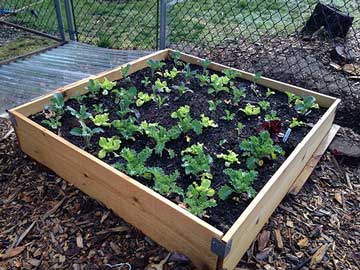By March the worst of winter is typically over for many gardeners and we can start looking forward to the next season in the garden. The earliest and easiest seeds to start are those vegetable and flowers that enjoy cool weather.
 Purple kale and chards in the early season garden.
Purple kale and chards in the early season garden.
In the vegetable garden the cool weather seeds include many that can even tolerate a little frost. These vegetables, such as kale, chards and spinach, are valued for their leaves which contain plenty of vitamins and other nutrients. Peas also enjoy cool weather but they do not enjoy frost, so don’t start this quite as early as the kales.
Just because these vegetables are valued for their leaves, does not mean that they lack color or are boring in the garden! Chards have bright red or yellow central stems, while kales come in burgundy as well as various shades of green. Lettuce is another cool weather vegetable to get started early that also comes in a variety of wonderful colors. Like peas, lettuce cannot survive a frost. It can however, survive nights when temperatures dip into the mid-30s if you use a light frost cover.
 Bachelor buttons
Bachelor buttons
There are also some flowers that enjoy early spring sunshine. Poppies are probably the most common cool weather flowers and stocks, hollyhocks and bachelor buttons (or cornflowers) all like cool weather for growing. In warmer climates the seeds can be sown in fall, but they do very well when planted in early spring as well.
When is "early spring"? and what is too early? Traditionally the way to determine if you soil is ready for early spring planting, you take a handful of soil and squeeze. If the clod of dirt drips and feels icy – you are too early. If the clump starts to break apart and is workable, then it is probably ready for planting. Look at the long-range weather forecast, as well as when your last frost is scheduled (check the local Extension service for this date) to help you determine if the time is right for planting.
Many of these seeds do well started indoors. It's important once plants mature and are ready for transplant that you introduce them gradually to the outdoors. They may not make it if planted directly into the garden without a transition as they need time to adjust to both the sunlight and changing elements after growing in a controlled environment. Put them outside in sunlight in a protected area for a few hours each day for a week. They should then be ready for transplant outdoors.
by Kate Copsey, Garden Writer and Author